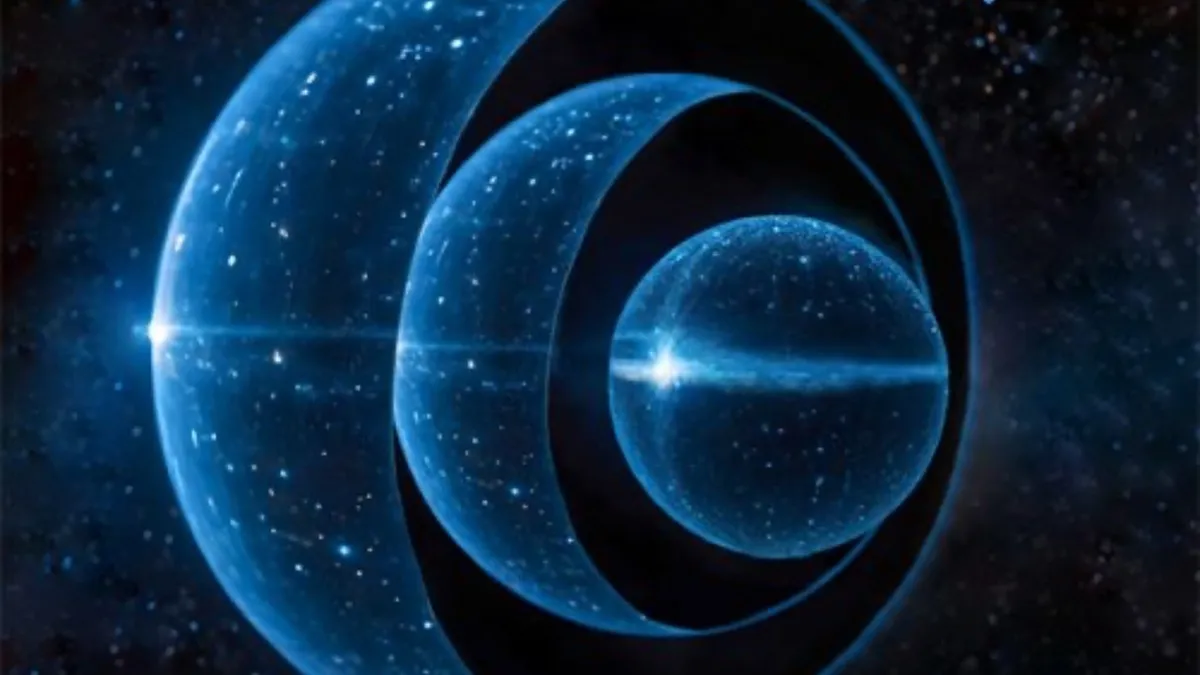"An artist’s impression of the ultra-long period magnetar. Astronomers discovered the object using the Murchison Widefield Array (MWA), a radio telescope on Wajarri Yamaji Country in outback Western Australia. Credit: ICRAR" (Phys.org, Astronomers find new type of stellar object that challenges understanding of neutron star physics)
Researchers found a new type of object, that challenges the knowledge of neutron stars. The ultra-long period magnetar is the neutron star that is almost all the time in the same direction. That means the magnetar poles are all the time in the same position. And that thing makes them interesting. The pulsars are neutron stars that rotate very fast.
The fast-rotating neutron star turns its poles to the earth alternately. That thing means. That is for making pulsars. The neutron star must have two rotating axles. And that means it rotates like Uranus. The other rotation axle is polar. Another axle is in the equator of the neutron star, and that thing makes the neutron star's poles turn to Earth alternately.
"An animation describing the discovery, the behavior of the object, and what it might look like. Credit: ICRAR." (Phys.org, Astronomers find new type of stellar object that challenges understanding of neutron star physics)
The thing that makes this effect interesting is that in supernova. The eruption travels to the poles. And then the remnant of that case is a magnetar, neutron star, or black hole. Another interesting thing is how the second rotational axle that turns the neutron star's poles forms. The polar axle or difference between the neutron star's shell and its core determines the magnetic field's force.
This is a reason for small and light neutron stars have stronger magnetic fields than heavy neutron stars. The light neutron star's shell can rotate faster in comparison to its core than the heavy neutron star's shell.
"According to findings by physicists at Goethe University Frankfurt, a gravastar could look like a matryoshka doll." (Interesting Engineering, Nestars: Study suggests gravastars akin to nesting doll structure)
But then to the new hypothetical alternative to a black hole the gravastar.
Hypothetical gravastar is the thing that can transform our knowledge of physics. The gravastar would be the star whose core is formed of dark matter. Those gravastars can be fully formed of dark matter. Or partially formed of dark matter. The dark matter core rotates as fast as possible, and that thing forms the situation where dark energy changes its direction. So in that case the dark energy pulls objects to the gravastar's oribiter. And there could be a quantum field that traps photons around it.
One sign of gravastar could be the ring structure that orbits an object that is not visible, but whose mass is lower than a black hole's mass. If there is something like an invisible stellar-mass object. That forms a ring around it, that thing can make the gravatar true. The gravastar could be large, but less massive than a black hole. So the gravastars have no event horizon. That means the quantum fields around it can trap photons orbits it.
The gravastars can be invisible themselves. But a thing like a too-low-mass star can uncover its position. OGLE-TR-122b is the smallest known red dwarf in the universe. Its mass is only 20% higher than Jupiter's mass. The question is why does that kind of M-type star exist? In models, the dark matter gob can pull material around it. So, the Dark matter gravitational effect pulls visible material into the gravastar's shell. And that thing means that in the place of the gravastar can form the red dwarf. So could the dark matter gob inside the smallest known stars that produce energy all the time explain those stars' existence?
https://interestingengineering.com/science/nestars-study-suggests-gravastars-akin-to-nesting-doll-structure
https://phys.org/news/2023-07-astronomers-stellar-neutron-star-physics.html
https://en.wikipedia.org/wiki/Gravastar
https://en.wikipedia.org/wiki/OGLE-TR-122
https://learningmachines9.wordpress.com/2024/02/18/the-gravastars-are-the-newest-hypothetical-stellar-objects/
.






No comments:
Post a Comment
Note: Only a member of this blog may post a comment.